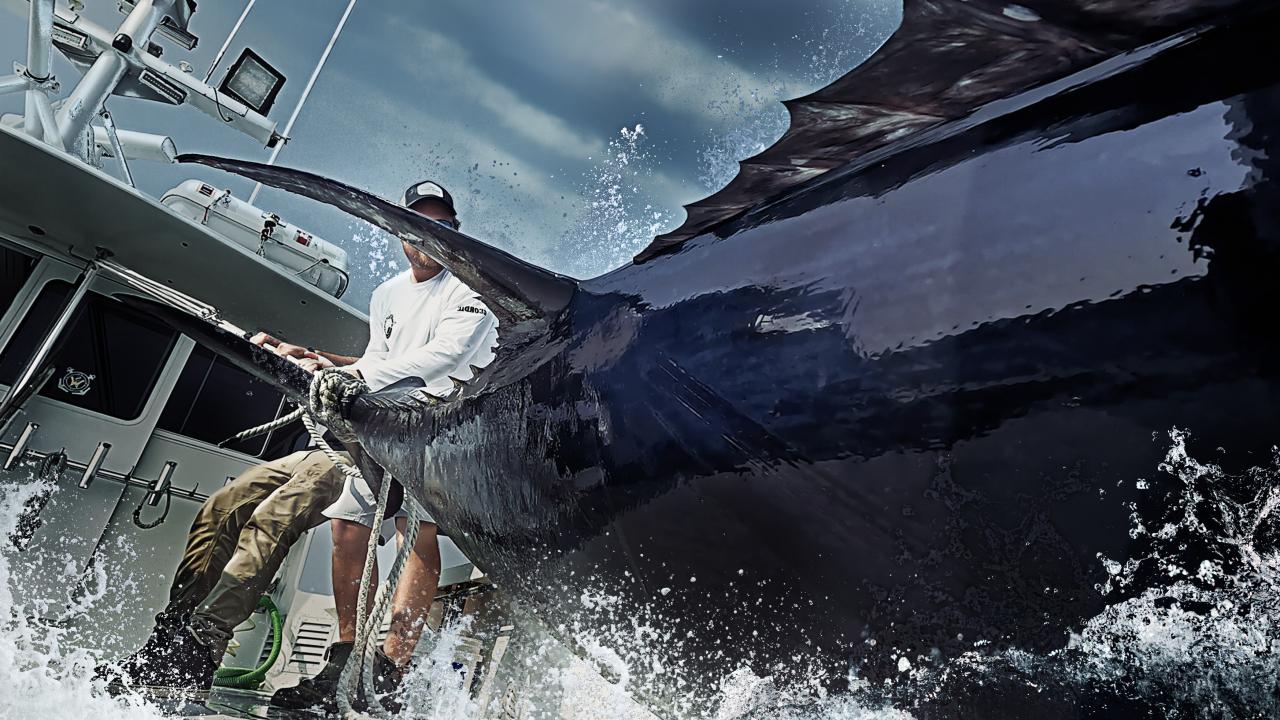- Canada
Americas
Asia & Oceania
Middle East & Africa
Europe
TV SHOWS
VIDEOS
Don't Miss
Most Viewed
Photographer S1
Show: PhotographerLawless Island S7
Show: Lawless IslandWicked Tuna S13 Promo
Show: Wicked TunaPolar Bear Cubs
Show: Wild CanadaShipwreck Treasure
Show: Wicked TunaThe Invaders
Show: Wild Yellowstone: She WolfCritter Fixers: Country Vets S6
Show: Critter Fixers: Country VetsMonkey Hot Tub
Show: Wild Japan: Snow MonkeysTo See God Inside Your Brain
Show: The Story of God with Morgan Freeman
PHOTOS
Photo of the day

WICKED TUNA
- HOME
- ABOUT
- VIDEOS
- PHOTOS
- LOCATION
- INTERACT
- MORE
- Plight of the Bluefin Tuna
- Still Waters: The Global Fish Crisis
- Frequently Asked Questions
- Bluefin Tuna
- Seafood Crisis: Time for a Sea Change
- Wicked Glossary
- Bluefin Tuna 101
- Gloucester: The Fishing Life
- Captain's Q&A
- Rod and Reel: Bluefin Tuna Fishing by the Numbers
- Overfishing
- 10 Things You Can Do to Save the Ocean
- Seafood Substitutions
- Cook Wise Recipes
- Bluefin Tuna Resources
- Bluefin 360
- LEARN ABOUT BLUEFIN TUNA
FREQUENTLY ASKED QUESTIONS
Q: What is the difference between the canned tuna sold in grocery stores and the bluefin tuna being caught on Wicked Tuna?
First, it is important to understand that the tuna in your grocery store and the bluefin tuna featured in Wicked Tuna are two different types of tuna.
Approximately 70% of the canned and pouched tuna Americans eat is skipjack tuna and that is what is most commonly purchased for tuna sandwiches.
Yellowfin tuna can be found fresh, frozen or canned as light-meat tuna (often blended with skipjack tuna). About 30% of canned and pouched tuna in America is albacore tuna - the only tuna meat allowed to be labeled "white meat."
Because of its high fat content, bluefin tuna is especially prized for raw consumption as sushi and sashimi. Check out the ISSF site for a status of all tuna species and stocks.
Q: There are also different species of bluefin tuna. Which bluefin species is in the show, and what are the other kinds?
The fishermen in Wicked Tuna fish western Atlantic bluefin tuna.
Three species of bluefin tuna are found around the world - Northern (or Atlantic) bluefin tuna (Thunnus thynnus), Southern bluefin tuna (Thunnus maccoyii) and Pacific bluefin tuna (Thunnus orientalis). Atlantic bluefin tuna is comprised of one relatively small population that gathers annually in the Gulf of Mexico to reproduce, (the western stock) and a larger population that forms spawning aggregations in the Mediterranean (the eastern stock).
All bluefin are highly migratory. Northern, or Atlantic, bluefin tuna are found throughout the entire North Atlantic and its adjacent seas, including the Mediterranean. In the western Atlantic, bluefin are found from Newfoundland to the Gulf of Mexico; in the eastern Atlantic, they're found from south of Iceland to the Canary Islands and throughout the Mediterranean Sea.
The western stock is harvested off the coast of North America by Canada, Japan, and the United States) and the eastern stock is harvested off the coast of Europe and Africa and in the Mediterranean Sea. Recent research has shown that quite a few eastern Atlantic bluefin swim across the Atlantic and get caught in the North American fishery.
On average, all bluefin tuna populations are estimated to be at about a quarter of 1950's levels. As the world debates how to save the species, the fishermen featured on Wicked Tuna depend on them to make their living...one bluefin at a time.
Q: Is it legal to eat bluefin tuna in the United States?
Yes. Bluefin tuna is legally caught off the Atlantic and Pacific coasts of the United States and is legally served at select seafood and sushi restaurants. The restaurants are usually high-end and the bluefin dishes they offer tend to be very expensive.
For more information about seafood options and alternatives, visit our Seafood Decision Guide.
Q: There is a lot of discussion of the tuna going to Japan in the show. Does all of the bluefin caught off Gloucester go to Japan? And why is demand so high in Japan?
The US accounts for maybe 5% of the global Bluefin tuna catch and over half of the US catch is exported, mainly to Japan. About 3/4 of the global bluefin catch goes to Japan where its fatty flesh is consumed as the highest grades of sushi and sashimi - maguro and toro.
Q: Does bluefin tuna contain high levels of mercury? Is it dangerous to consume?
Bluefin tuna are potentially hazardous to humans since they contain very high amounts of the neurotoxin mercury. One of the largest of the tuna species, bluefin tuna often contain mercury levels nearly triple that of the more common yellowfin and skipjack tuna. Mercury contamination of seafood is a public health concern, as high levels of mercury can lead to myriad health problems, including developmental and learning disorders. However, fish is also one of the only foods naturally high in the omega-3 fatty acids that are critical to early brain development and can reduce the risk of heart disease later in life. If you eat tuna, choose smaller tuna that have less mercury, like the skipjack tuna used for light (chunk light) canned tuna. For information on seafood items that are low in mercury, as well as those high in omega-3 fatty acids, visit our Seafood Decision Guide.
To learn more about mercury levels in bluefin tuna and other fish species, please visit the U.S Food and Drug Administration's website on mercury in seafood.
Q: What are the different ways bluefin tuna is caught?
The fishermen in Wicked Tuna use a method called rod and reel, or hook and line fishing. They employ short fishing lines with hooks and specific bait to attract bluefin tuna. Once they have reeled the fish in, they harpoon it before bringing it aboard the ship. They are able to catch one fish at a time using this method.
There are many other methods of catching bluefin that are not used by the fishermen in Wicked Tuna. Longline fishing involves the use of multiple short lines and hooks connected to a longer main line. Longlines can be many miles long and can contain thousands of shorter lines and hooks. The incidence of bycatch - catching an unintended species of fish through the use of a multi-catch fishing method - is far greater with longline fishing.
When bluefin were more numerous, purse seines were used to catch them along the east coast of N. America. Purse seiners run a wall of netting to encircle whole schools of fish at one time then draw the net closed at the bottom to pull the fish in. Four vessels still have federal permits to catch bluefin with purse seines though they have not done so for the last couple of years. Purse seining for bluefin is much more common in the Mediterranean and has been a major contributor to overfishing of bluefin there.
To learn more about various fisheries techniques, visit Monterey Bay Aquarium's website.
Q: Where do bluefin tuna spawn and what is their migratory pattern?
The Northern or Atlantic bluefin tuna (Thunnus thynnus) is made up of one relatively small population that gathers annually in the Gulf of Mexico to reproduce, (the western stock) and a larger population that forms spawning aggregations in the Mediterranean (the eastern stock). The western stock is found from the Gulf of Mexico to Newfoundland. The eastern stock ranges from the Canary Islands to south of Iceland.
Each population is considered a distinct breeding unit. Their two spawning areas are widely separated. The western stock spawns in the Gulf of Mexico (including the Straits of Florida) and the eastern stock spawns in the Mediterranean Sea. However, recent research has shown that quite a few eastern Atlantic bluefin swim across the Atlantic and get caught in the North American fishery.
For more detailed information, please visit Tagagiant.org
Q: Is National Geographic advocating for bluefin tuna fisherman by airingWicked Tuna?
Bluefin fishing takes place legally in the US. Some believe that the US fishery is very well-managed and is contributing to the recovery of the Western Atlantic stock. Others strongly disagree, arguing that for the stock to recover, there must be drastic reductions in the number of fish caught. Our hope is that this show provides National Geographic an opportunity to reach a wider audience about bluefin and draw their attention to this debate. We are committed to providing as much information as possible, and to allowing different perspectives, including those of fishermen, scientists and the conservation community, to have a voice. But, National Geographic is not an advocacy organization.
The National Geographic Society has been inspiring people to care about the planet since 1888. It is one of the largest non-profit scientific and educational institutions in the world and the health of the world's oceans is a major focus. We want to provide a platform so that the many different advocacy organizations can have a voice and we have provided links to as many as possible on our website, including the American Bluefin Tuna Association (ABTA), Blue Ocean Institute, Commercial Fishermen of America, National Coalition for Marine Conservation, National Marine Fisheries Service (NOAA) and many others.
For more information on the Society's Ocean initiative, visit National Geographic's extensive Ocean website.
ADVERTISEMENT
PHOTOS

Bluefin Catch
Join these men and woman in the fishing of one of the smartest fish in the ocean and the hardest...
- All Galleries
VIDEOS
More On Society


![Tim Shaw peels the foam roof off... [Photo of the day - 19 APRIL 2024]](https://assets-natgeotv.fnghub.com/POD/15170.ThumbL.jpg)
![Two crew members film Dr. Pol, Ben... [Photo of the day - 18 APRIL 2024]](https://assets-natgeotv.fnghub.com/POD/15168.ThumbL.jpg)
![The Notre Dame Cathedral. This is... [Photo of the day - 17 APRIL 2024]](https://assets-natgeotv.fnghub.com/POD/15226.ThumbL.jpg)







